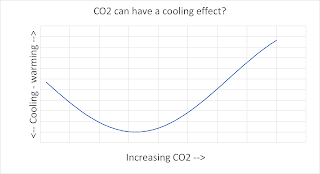In real life on Earth, the physical layer which absorbs most radiation from the Sun and which also emits most radiation to space is the clouds. So the clouds have to reach a certain temperature dictated by SB-Law, and their actual temperature is higher than that because clouds have significantly less than 100% emissivity. Not uncoincidentally, typical average cloud altitude = effective emitting altitude of 5km (link to article with a classic 'let's ignore clouds and pretend that it's CO2 at work' explanation).
Clouds have to warm up the surrounding air to the same temperature. In turn, the air above and below the clouds is correspondingly cooler or warmer because of the gravito-thermal effect (the trade-off between thermal and potential energy aka the lapse rate, which is g/Cp as adjusted for latent heat of evaporation/condensation). That dictates the air temperature at sea level on Earth.
The extra bit of sunshine that hits (and warms) the land or ocean is a side show in these calculations because clouds are constantly moving sideways, evaporating and re-condensing. The air warms up and cools down very slowly and smooths out any extra from direct sunshine. And we have established that the 'greenhouse effect' is much smaller in largely cloud-free areas.
Nobody seems to have bothered doing the calculations, because it would debunk the CO2 theories. The calculations themselves are simple enough, the problem is the inputs - clouds are inherently nebulous, different altitudes, thickness, emissivity, they are moving, disappearing and re-forming etc. Nonetheless, the general principles are simple enough and we can work backwards from actual, averaged out temperature observations to get values (for altitude, emissivity, temperature, lapse rate etc) that stack up with measurements in real life.
-------------------------------------------
The CO2 theorists tie themselves in knots over this. They have to ignore clouds and reverse engineer an explanation of why CO2 *miraculously* has the same effect as clouds *actually* do. Here is the best they have dreamed up, from astronomie.be (hence the hilarious pun in the title of this article).
Surprisingly, CO2 has another side effect, a cooling effect. Stop yourself, however, if you think this could compensate for global warming. This process has been going on, and has been studied, for a long time already, and clearly, it hasn’t neutralised the warming trend. So, what is going on exactly..?
Carbon dioxide molecules are very efficient at absorbing and re-emitting heat in the form of infrared radiation. In the lower atmosphere, air molecules are tightly packed together, like people at a summer festival, and so the heat that one molecule re-emits is immediately absorbed in the same atmospheric region. This is the greenhouse effect, an overall heating of the troposphere.
The middle atmosphere is much less dense (the middle and upper atmosphere combined only hold 15% of the total mass). Here, the infrared radiation that is re-emitted by CO2 molecules is reabsorbed much less and more radiation escapes out into space. This leads to an overall loss of heat, and thus causes a cooling effect.
Based on these flawed assumptions, you can plot CO2 vs likely temperature thusly:
- No CO2 - no cooling or warming effect;
- Small amount of CO2 - cooling below initial temperature;
- Critical amount of CO2 - no cooling or warming relative to initial temperature;
- More CO2 than that - warming effect relative to initial temperature.
So it would look like this:
 That is either a) total bollocks or b) completely contradicts the rest of CO2 theory. Or c) both. Or d) CO2 theory itself is bollocks. CO2 is supposed to absorb radiation and re-emit some that would have gone to space back down to the hard surface. Fair enough. So CO2 can't possibly have a cooling effect. However little there is, it must reflect some radiation i.e. have some warming effect, however slight.
That is either a) total bollocks or b) completely contradicts the rest of CO2 theory. Or c) both. Or d) CO2 theory itself is bollocks. CO2 is supposed to absorb radiation and re-emit some that would have gone to space back down to the hard surface. Fair enough. So CO2 can't possibly have a cooling effect. However little there is, it must reflect some radiation i.e. have some warming effect, however slight.
To use an analogy, a sheet of normal window glass reflect a tiny bit of light and lets most through - you normally don't notice this when you are looking out of the window by day. If you stack two or three panes of glass, you notice the reflections more. If you stack ten panes of glass, it's like a partially transparent mirror. If you stack twenty panes, you basically have a mirror. What they are saying is that one pane reflects no light at all; a few panes will allow more light through than hits them; if you have 'enough', the two effects cancel out; and if you have more than 'enough', you have a mirror.
There is no such curve for glass (if you plot 'amount of light reflected' vs 'number of panes'), it's an upwards slope and doesn't dip below zero. There is no reason to assume, to the extent that CO2 has any effect whatsoever, that it would be anything other than an upwards slope that doesn't dip below zero.
------------------------------------------
To sum up, air above the clouds (which the CO2 crowd call the 'effective emitting altitude') is not cooler than Earth's 'effective temp' (which in practice is the cloud temp, duh, see first paragaphs above) because the CO2 is Hoovering warmth away into space. It is because the lapse rate works both ways. Below clouds = warmer, above clouds = cooler.
